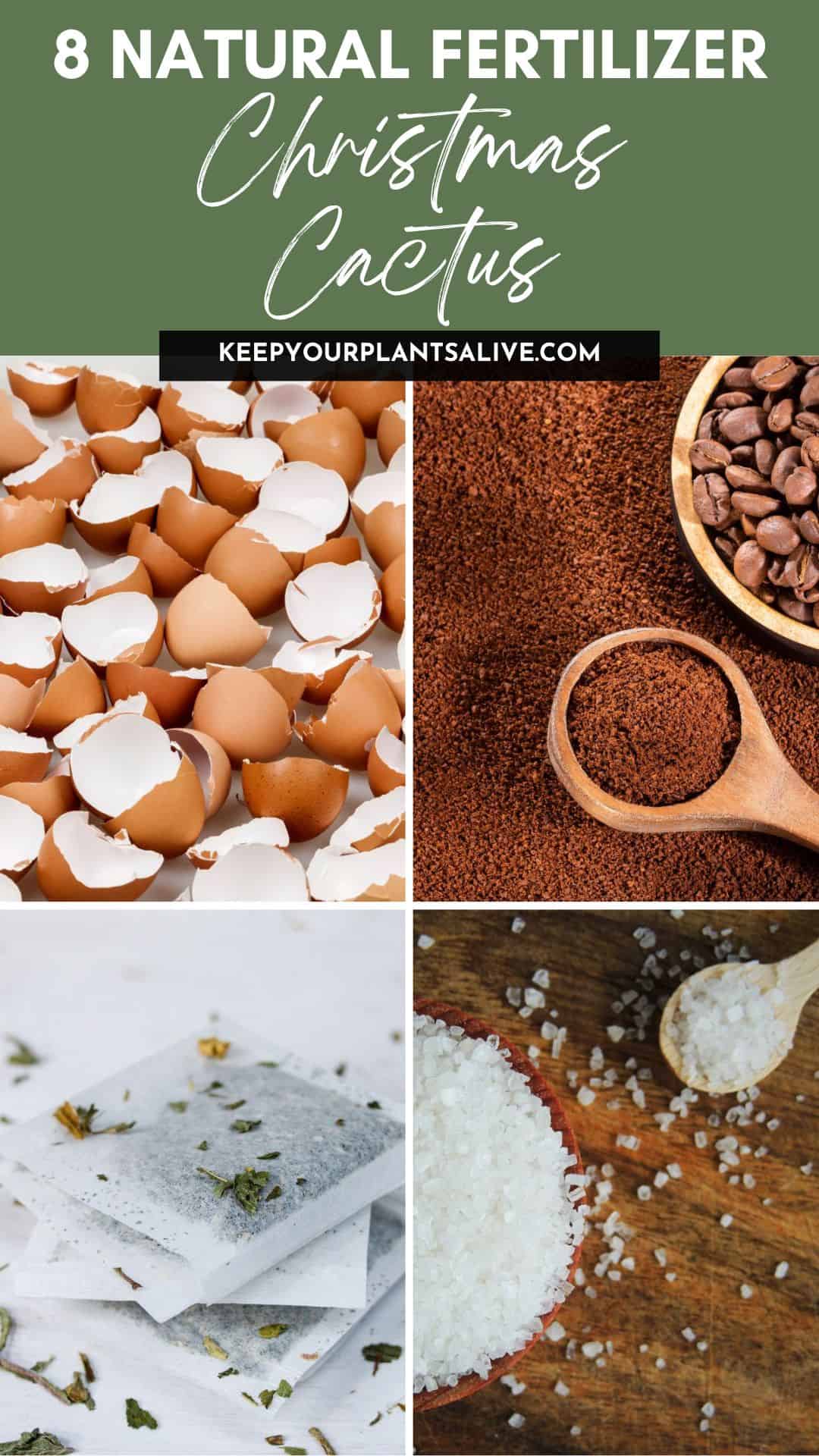Are you the proud owner of a Christmas cactus and want to ensure it thrives during the holiday season and beyond? Discover the best practices for Christmas cactus care to keep your festive plant healthy and vibrant!
I am obsessed with all things holiday cactus related.
These plants are so cool because of the shape of their leaves. They grow long stems with thick fleshy segments that are just so unique and different from any other traditional house plant.
They are a great addition to your house plant collection because of their unique leaf shape and because they bloom at interesting times of the year.
For example, the Christmas cactus blooms at Christmas time. It gets big red or pink blooms at the end of the stems and it is just a really fun and unique addition to any home.
Not only are these plants really beautiful to look at, but they are also easy to care for two.
Let's dive into the essential care tips to help you enjoy your Christmas cactus to the fullest!
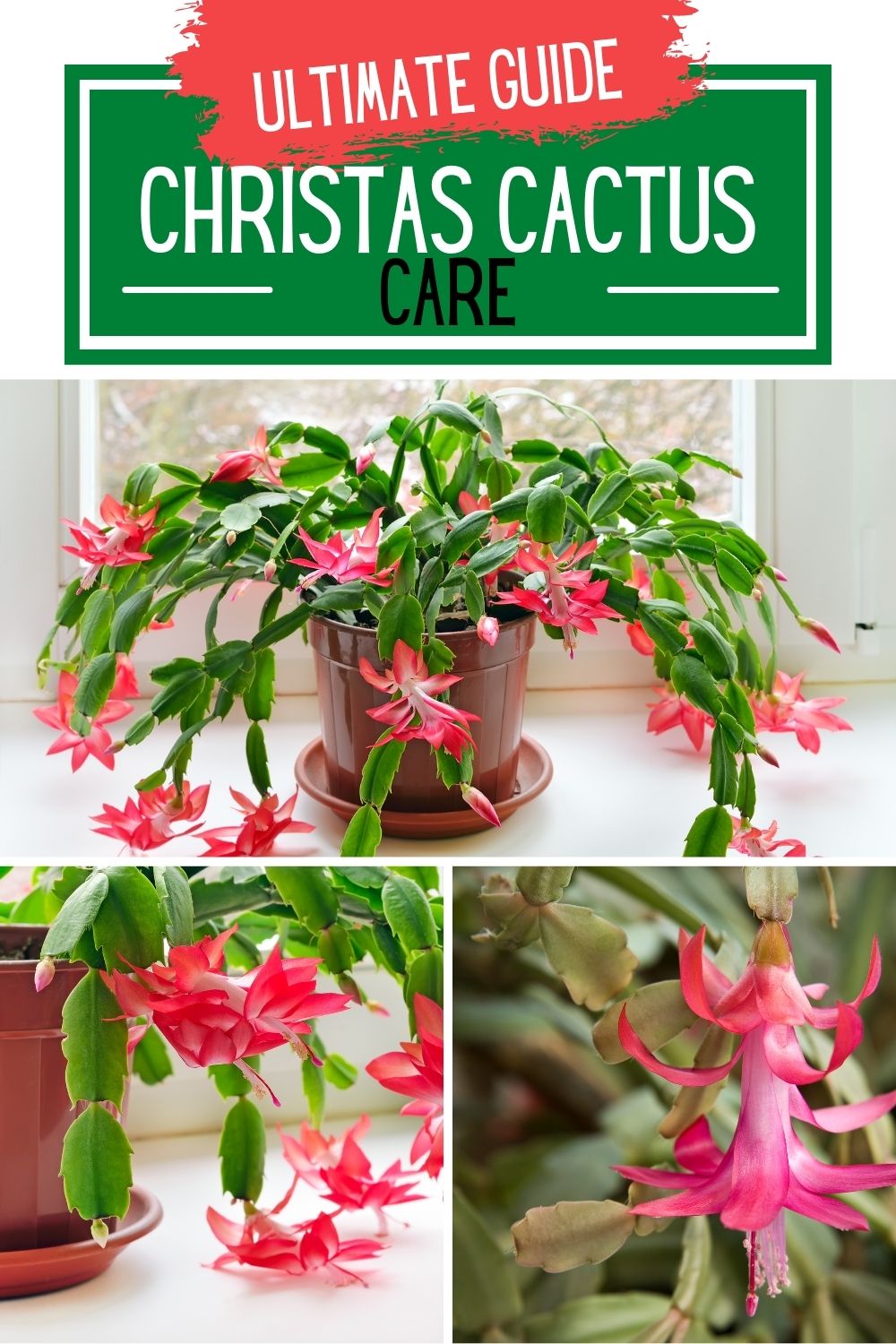
Christmas cactus care guide
Here is everything to know about keeping your Christmas cactus alive!
Lighting for Christmas Cactus
Christmas cacti are not demanding when it comes to lighting. For most of the year, they'll do well with indirect light. However, to encourage blooming, they require some special attention.
In September and October, create a dark environment for your Christmas cactus by placing it in a room with complete darkness for at least 12 hours a day. You can achieve this by covering the plant or moving it to a dark closet. This process should last for 6-8 weeks, accompanied by reduced watering.
Once the blooms start to form, transition your Christmas cactus back to its regular indirect light setting.
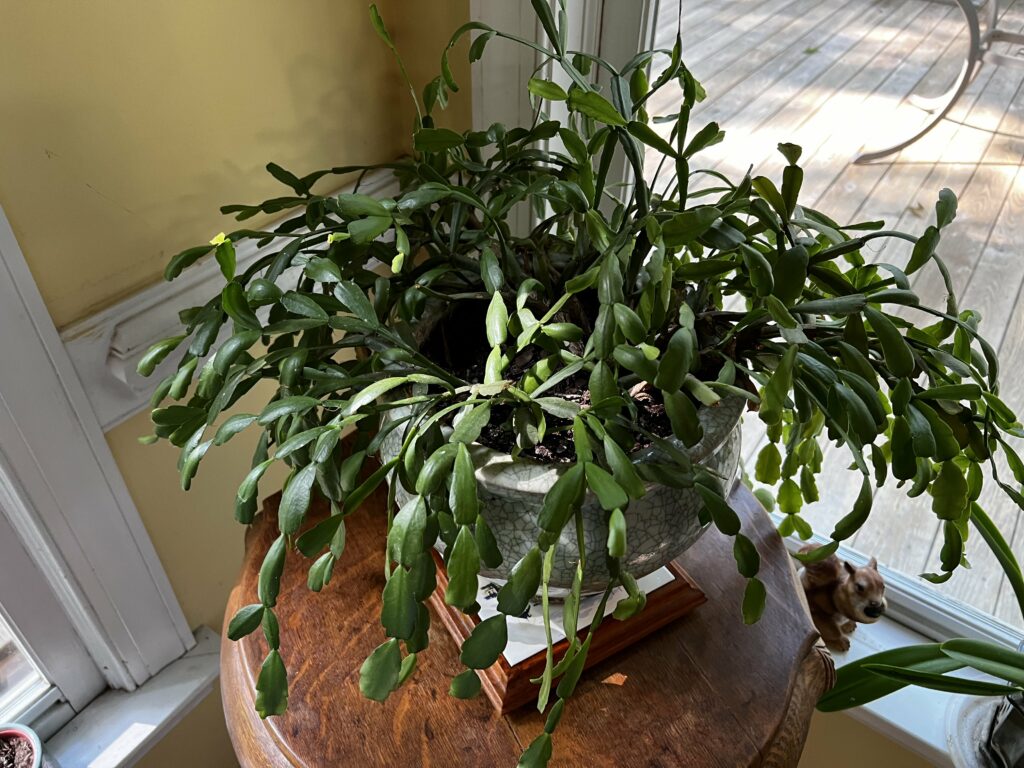
Watering Your Christmas Cactus
Christmas cacti don't have high water needs. Only water them when the top 3 inches of soil feel dry, which usually translates to every 2 to 3 weeks.
During their primary growing season, from April to September, they may require slightly more water, but still, exercise caution not to overwater.
Additionally, these tropical plants appreciate a light misting or spraying with a spray bottle to maintain humidity levels.
Soil and Potting
Christmas cacti prefer being slightly root-bound, so there's no rush to repot them frequently. You can repot them with fresh potting soil, but it's perfectly fine to keep them in a slightly smaller pot.
The best time to consider repotting your Christmas cactus is between February and April. This allows the plant to acclimate to its new pot before the blooming season arrives.
Choose a well-draining soil mix, such as one suitable for orchids, as Christmas cacti dislike overly soggy conditions.
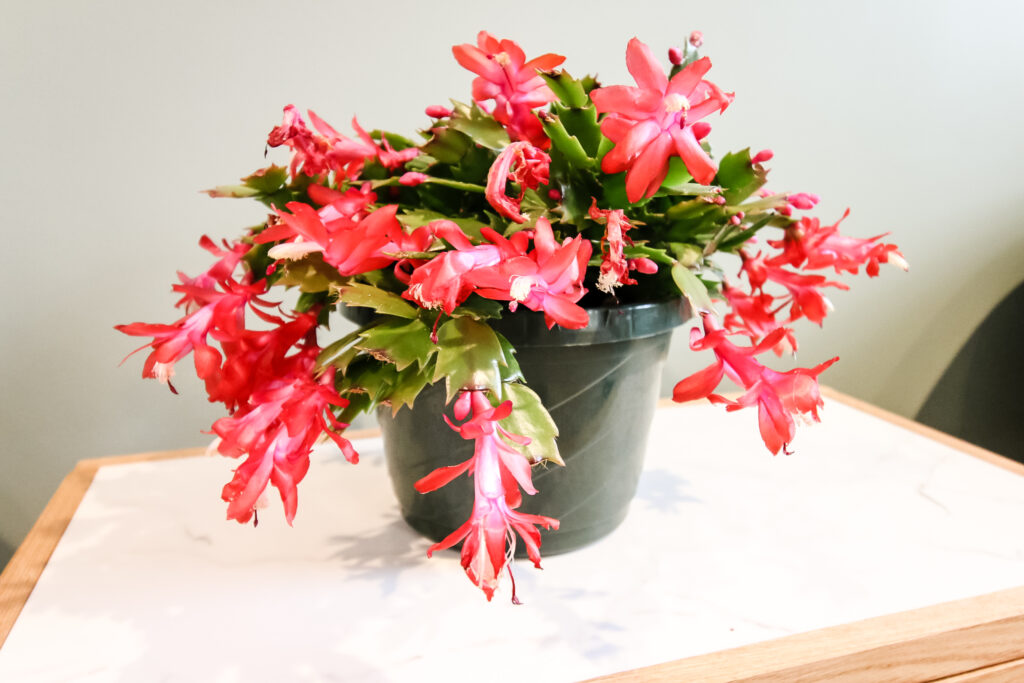
Encouraging Blooming
To promote blooming, Christmas cacti need shorter, cooler days. If you reside in an area without frost during the fall, leaving your Christmas cactus outdoors can provide the required conditions.
For those in colder climates, mimic these conditions by providing your Christmas cactus with at least 12 hours of darkness in the lead-up to the blooming season.
Post-Blooming Care
After your Christmas cactus has finished blooming, remove any dropped buds and place it in indirect light.
Adjust the watering schedule to be slightly more frequent but still moderate until April when it will require more water as it enters its growing season.
Indoor vs. Outdoors - where to keep a Christmas cactus
Christmas cacti cannot tolerate temperatures below 50 degrees Fahrenheit.
If you live in a warm region, you can keep your Christmas cactus outdoors during suitable months, but ensure it's protected from direct sunlight, which can scorch its leaves.
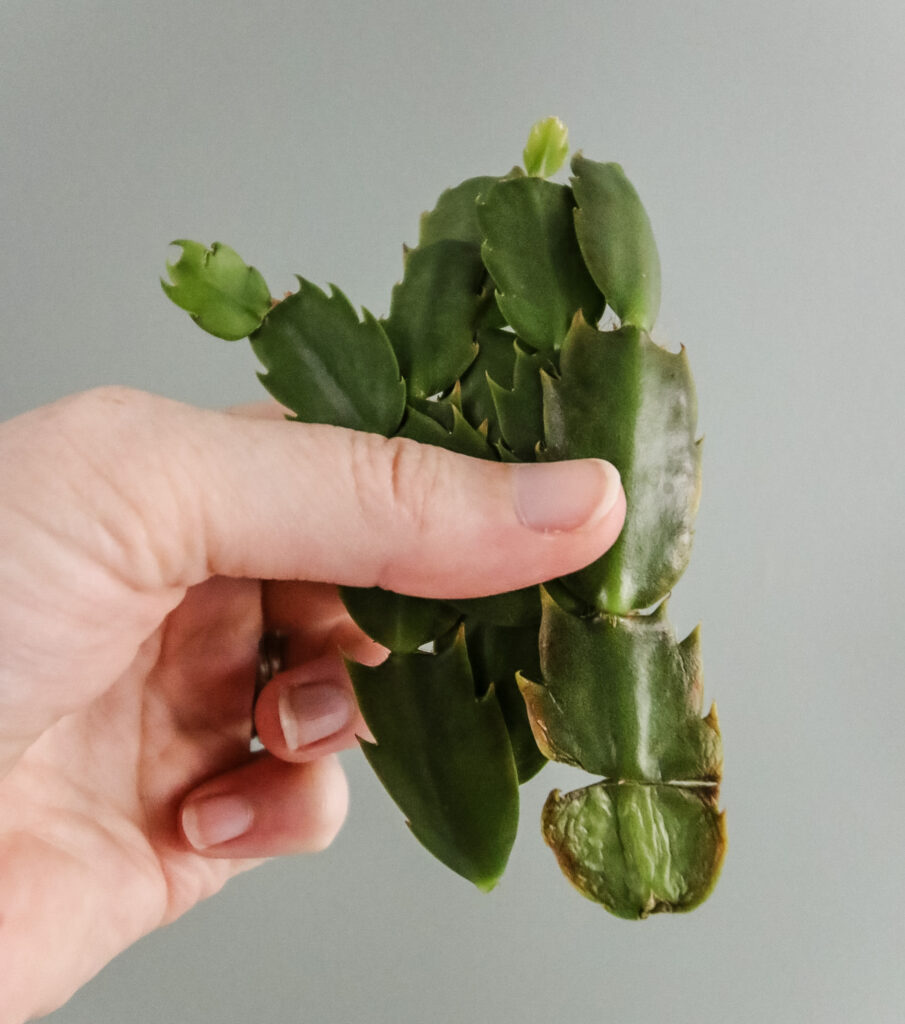
Common Christmas Cactus Issues
Your Christmas cactus is a resilient and beautiful plant, but it's not immune to a few common challenges. Understanding these issues and how to tackle them head-on will help you keep your cactus thriving.
Overwatering Woes
As mentioned earlier, overwatering is a prevalent problem. But it's not just about leaf drop; it can also lead to root rot.
Signs of overwatering include yellowing or wilting stems, mushy leaves, and a musty odor from the soil.
To prevent overwatering, always allow the top inch or so of soil to dry out between waterings. Ensure proper drainage in your pot and never let your Christmas cactus sit in standing water.
Underwatering Blues
On the flip side, underwatering can stress your Christmas cactus. Signs of underwatering include shriveled stems, dry, crispy leaves, and slowed growth.
To remedy this, adjust your watering schedule to keep the soil consistently moist but not soggy.
During the growing season (spring and summer), it may need more frequent watering than during its dormant period.
Light Dilemmas
Inadequate or excessive light can also cause issues. Too little light can lead to leggy, weak growth, while too much direct sunlight can scorch the leaves.
Ensure your cactus receives bright, indirect light for most of the year. During its blooming season, it may benefit from some morning sunlight but should be protected from harsh afternoon rays.
Pests and Diseases
While Christmas cacti are relatively hardy, they can still fall victim to pests like mealybugs and aphids. Keep an eye out for any signs of infestation, such as sticky residue on the stems, discolored or misshapen leaves, or small insects.
If you spot any unwanted visitors, isolate your plant and treat it promptly with insecticidal soap or neem oil.
Bud Drop
If your Christmas cactus buds are falling off before they have a chance to bloom, it can be disheartening.
This issue can result from sudden temperature fluctuations, drafts, or even disturbances in the plant's environment.
Try to maintain a consistent setting and avoid moving the cactus unnecessarily, especially when it's forming buds.
Stalled Blooms
Sometimes, your Christmas cactus may refuse to bloom despite your best efforts. If this happens, it could be due to insufficient darkness during the bud-forming period.
Ensure your cactus receives at least 12-14 hours of uninterrupted darkness for about 6-8 weeks leading up to its expected blooming time.
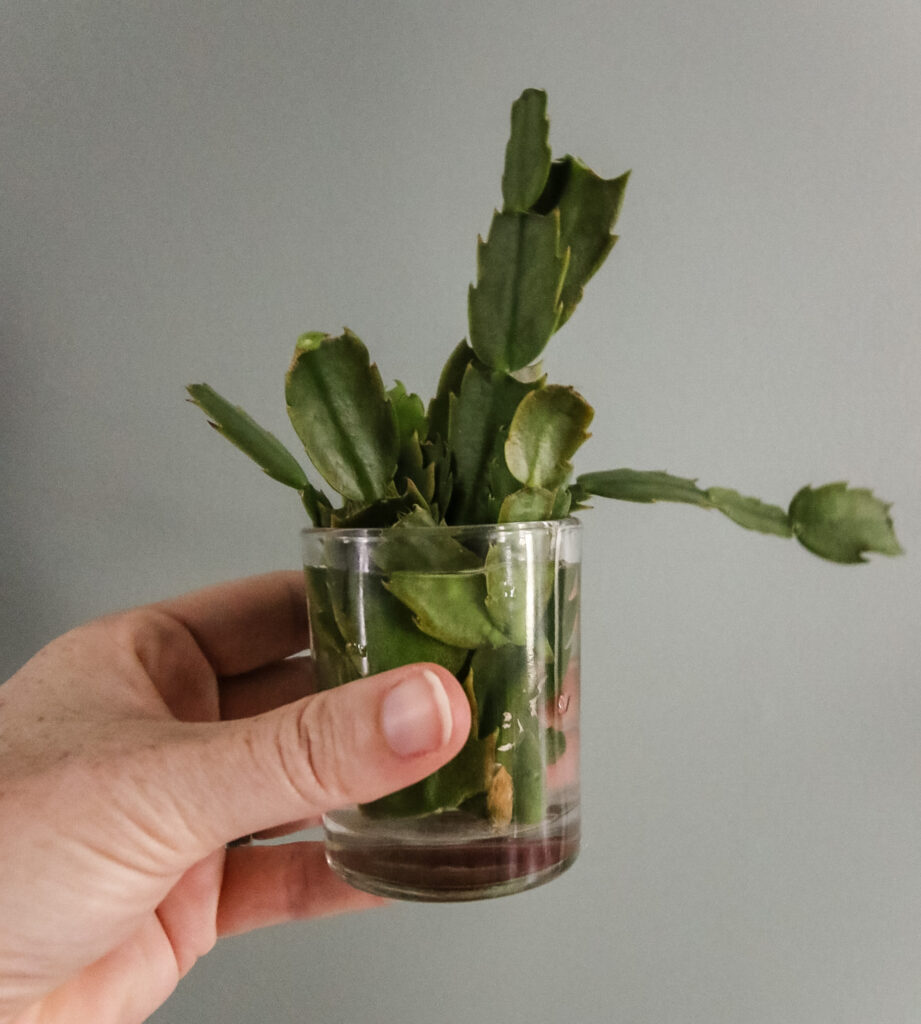
Propagating a Christmas Cactus
If you wish to expand your Christmas cactus collection, you can easily propagate them through cuttings in water or soil or via division.
This is a great way to fill in a spare pot or share your plant with a friend.
To propagate a Christmas cactus, simply cut off a segment of 2-6 leaves, dip in rooting hormone, and place in soil. They will root in place!
That's the essence of caring for a Christmas cactus. If you have any more questions or need further guidance, feel free to ask!
Thanks for reading!


Hey there, I'm Morgan, a houseplant enthusiast from sunny Charleston, South Carolina. Growing up surrounded by my mom's lush orchids and African violets, I discovered the magic of bringing nature indoors. Thanks to the pandemic, I delved deeper into houseplants, discovering their power to uplift moods and transform spaces. I'm here to spill all my secrets, helping you pick the perfect houseplant - and make it happy. Let's keep your plants alive, together! 😊

